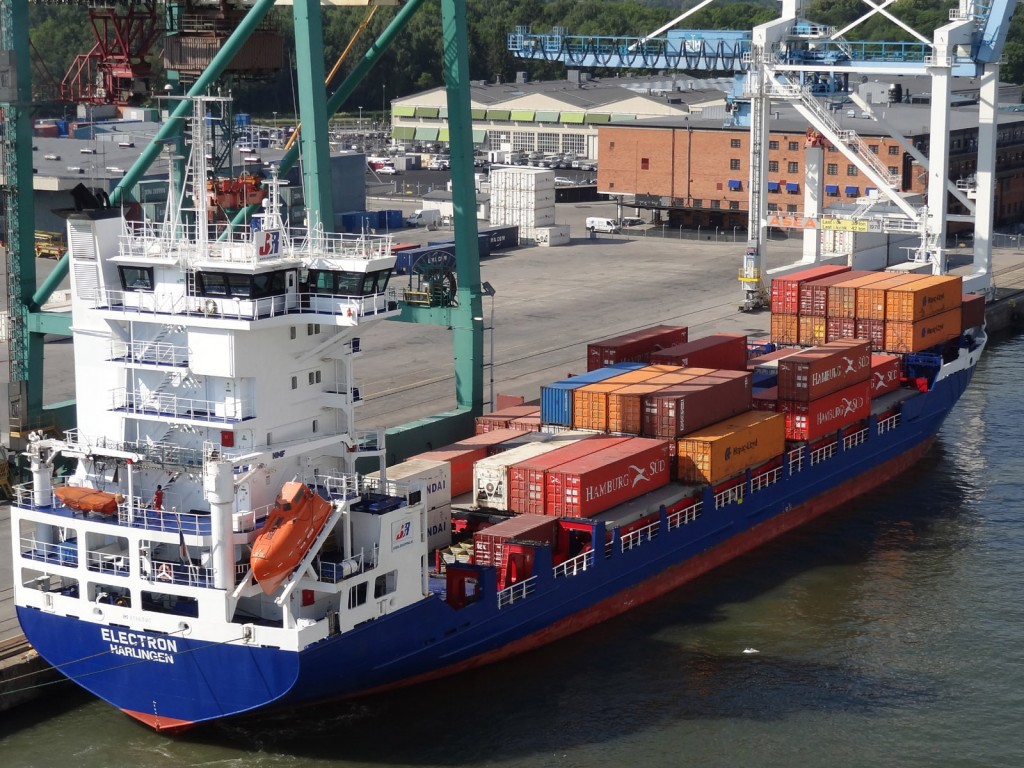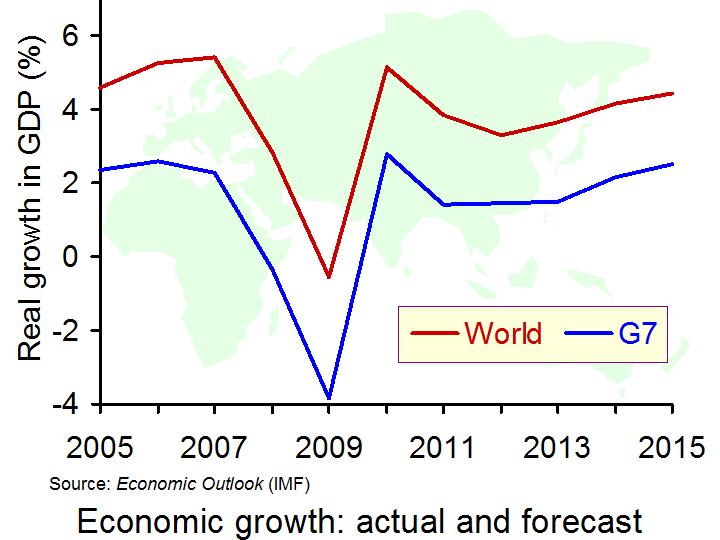 UK Supermarkets: a prime example of an oligopoly. This industry is highly competitive and over the past decade, but particularly since the onset of the credit crunch, price wars have been a constant feature of this market. You could barely watch a full programme on commercial TV without seeing one of the big supermarkets advertising that their prices were lower than everyone else’s! So, despite oligopoly being towards the ‘least competitive’ end of the market structure spectrum, this is an example of just how competitive the market can actually be.
UK Supermarkets: a prime example of an oligopoly. This industry is highly competitive and over the past decade, but particularly since the onset of the credit crunch, price wars have been a constant feature of this market. You could barely watch a full programme on commercial TV without seeing one of the big supermarkets advertising that their prices were lower than everyone else’s! So, despite oligopoly being towards the ‘least competitive’ end of the market structure spectrum, this is an example of just how competitive the market can actually be.
With household incomes being squeezed, in particular by another oligopolistic industry (energy) and with the ‘middle market’ being pinched by higher-end retailers and budget retailers, the supermarket sector is facing uncertain times. Asda’s sales growth has continued to slow and in response, the giant supermarket chain will be launching a £1 billion price-cutting campaign. Tesco is the market leader, but Sainsbury’s and Asda have been battling over the second spot. One of Asda’s selling points is its low prices. Perhaps not as low as Aldi and Lidl, but this new pricing strategy will aim to bring its prices further below Tesco, Sainsbury’s and Morrisons and close the gap with the two big discount supermarkets. As Andy Clarke, Asda’s Chief Executive, said:
close the gap with the two big discount supermarkets. As Andy Clarke, Asda’s Chief Executive, said:
We regard ourselves as the UK’s leading value retailer and it is against this backdrop that I have today set out our strategic priorities which will improve, extend and expand the business over the next five years.
So, what will be the impact of lower prices? It appears as though Asda is marketing itself towards the budget end of the pricing spectrum, perhaps aiming to become fiercer competitors with Aldi and Lidl and let Tesco and Sainsbury’s do battle with the higher-end retailers, such as Waitrose and Marks and Spencer. Lower prices should cause a substitution effects towards Asda’s products, as many of them will have relatively price elastic demand. If the other supermarkets don’t respond, this should lead to sales growth. However, the key to an oligopoly is interdependence: the actions of one firm will affect all other firms in the market. The implications then, are that Tesco may react to this pricing strategy by engaging in its own price cuts, especially as the Christmas period approaches. The characteristic of interdependence was evident in the aftermath of Asda’s announcement when shares in Tesco and Morrisons both fell, showing how the markets were responding.
 Of course, there are many other factors that affect a consumer’s decision as to whether to shop at Asda, Tesco or any other big supermarket. In the area where I live, we have a Tesco and a Morrisons (a few years ago, we had neither!). I don’t shop at Asda, as the nearest branch is over 30 miles away – even if prices were significantly lower, it would be more expensive to get there and back and a lot less convenient. For others, it may be loyalty and not just of the ‘I’ve shopped there all my life’ kind! For some, clubcard vouchers from Tesco may be preferred to Asda’s offerings and thus tiny price differences between the supermarkets may have little effect on a consumer’s decision as to where to shop. Many products at supermarkets are relatively cheap and thus as the proportion of our income that we spend on these goods is pretty low, any change in price doesn’t cause much of an effect on our demand.
Of course, there are many other factors that affect a consumer’s decision as to whether to shop at Asda, Tesco or any other big supermarket. In the area where I live, we have a Tesco and a Morrisons (a few years ago, we had neither!). I don’t shop at Asda, as the nearest branch is over 30 miles away – even if prices were significantly lower, it would be more expensive to get there and back and a lot less convenient. For others, it may be loyalty and not just of the ‘I’ve shopped there all my life’ kind! For some, clubcard vouchers from Tesco may be preferred to Asda’s offerings and thus tiny price differences between the supermarkets may have little effect on a consumer’s decision as to where to shop. Many products at supermarkets are relatively cheap and thus as the proportion of our income that we spend on these goods is pretty low, any change in price doesn’t cause much of an effect on our demand.
It’s not just a pricing strategy where money is being invested by Asda. More investment will be going into their online services and more stores will be created, kin particular in London and the South East where their presence is low, but demand appears to be high. Improving ‘product quality, style and design’ will also be on the agenda, all with the aim of boosting sales growth and securing its position as the second largest retailer in the sector, perhaps with a long term aim of one day overtaking Tesco. The following articles consider the supermarket battleground.
Supermarket battle heats up as Asda announces £1bn price-cutting plan The Telegraph, Graham Ruddick (14/11/13)
 Sainsbury’s profits make it second biggest supermarket BBC News (13/11/13)
Sainsbury’s profits make it second biggest supermarket BBC News (13/11/13)
Asda to launch £1bn price-cut plan AOL, Press Association (15/11/13)
Asda takes fight to rivals with £1bn investment plan The Guardian, Angela Monaghan (14/11/13)
UK’s Asda promises £1 billion investment in price cuts Reuters (14/11/13)
Asda makes bid to woo shoppers with vow of five-year £1billion price war after it was overtaken in market share by Sainsbury’s Mail Online, Sean Poulter (15/11/13)
Sainsbury’s overtakes Asda on demand for its premium lines Independent, Simon Neville (14/11/13)
Asda to put £1bn into lowering prices over five years The Grocer, Thomas Hobbs (14/11/13)
Wal-Mart posts $3.7bn quarterly income BBC News (14/11/13)
Questions
- What are the key characteristics of an oligopoly?
- What is meant by a price war? Who benefits?
- How important is the concept of price elasticity of demand when deciding whether or not to cut the price of a range of products?
- Why is the proportion of income spent on a good a key determinant of the elasticity of demand of a product?
- How can market share be calculated?
- Many suggest that the ‘middle market’ of the supermarket sector is slowly disappearing. Why is this?
- How effective will Asda’s price cutting strategy be? Which factors will determine its effectiveness?
 A key debate for some months has been the UK’s membership of the European Union. The debate has centred around the desire to return some powers back to the UK, but this has extended into the possibility of a referendum on our membership of the preferential trading area. So, let’s take a step back and consider why any country would want to be a member of a preferential trading area.
A key debate for some months has been the UK’s membership of the European Union. The debate has centred around the desire to return some powers back to the UK, but this has extended into the possibility of a referendum on our membership of the preferential trading area. So, let’s take a step back and consider why any country would want to be a member of a preferential trading area.
Preferential trading areas can be as basic as a free trading area or as advanced as a currency, or even political union. The eurozone is clearly a currency union, but the European Union, of which the UK is a member, is a common market. A common market has no tariffs and quotas between the members, but in addition there are common external tariffs and quotas. The European union also includes the free movement of labour, capital and goods and services. Membership of a preferential trading area therefore creates benefits for the member countries. One such benefit is that of trade creation. Members are able to trade under favourable terms with other members, which yields significant benefits. Countries can specialise in the production of goods/services in which they have a comparative advantage and this enables greater quantities of output to be produced and then traded.
Other benefits include the greater competition created. By engaging in trade, companies are no longer competing just with domestic firms, but with foreign firms as well. This helps to improve efficiency, cut costs and thus lower prices benefiting consumers. However, from a firm’s point of view there are also benefits: they have access to a much wider market in which they can sell their goods without facing tariffs. This creates the potential for economies of scale to be achieved. Were the UK to completely exit the EU, this could be a significant loss for domestic firms and for consumers, who would no longer see the benefits of no tariffs on imported goods. Membership of a preferential trading area also creates benefits in terms of potential technology spillovers and is likely to have a key effect on a country’s bargaining power with the rest of the world. As is a similar argument to membership of a trade union, there is power in numbers.
There are costs of membership of a preferential trading area, but they are typically outweighed by the benefits. However, estimates suggest that the cost of EU regulation is the equivalent of 10% of UK GDP. Furthermore, while the UK certainly does trade with Europe, data suggests that only 13% of our GDP is dependent on such exports. The future is uncertain for the European Union and Britain’s membership. There are numerous options available besides simply leaving this preferential trading area, but they typically have one thing in common. They will create uncertainty and this is something that markets and investors don’t like. Vince Cable warned of this, saying:
There are large numbers of potential investors in the UK, who would bring employment here, who have been warned off because of the uncertainty this is creating.
The impact of the UK’s decision will be significant and not just for those living and working in the economy. The world is no interdependent that when countries exist (or typically enter) a preferential trading area the wider economic effects are significant. While any change in the UK’s relationship with the EU will take many months and years to occur and then further time to have an effect, the uncertainty created by the suggestion of a change in the relationship has already sent waves across the world. The following articles consider the wider single market and the current debate on UK membership.
European Union: if the ‘outs’ get their way, we’ll end up like Ukraine Guardian, Vince Cable (16/5/13)
Conservative MP James Wharton champions bill to guarantee EU referendum Independent, Andrew Grice (16/5/13)
Nick Clegg shifts ground over EU referendum The Guardian, Patrick Wintour (15/5/13)
Cameron tells EU rebels to back referendum law Reuters, Peter Griffiths (16/5/13)
The EU and the UK – the single market BBC Democracy (4/3/13)
Single market dilemmas on Europe BBC News, Stephanie Flanders (14/5/13)
Lord Wolfson: I back the single market – but not at any cost The Telegraph, Lord Wolfson (19/1/13)
EU focuses on returning single market to health Financial Times, James Fontanella-Khan (8/5/13)
Questions
- What other examples of preferential trading areas are there? How close are they to the arrangement of the European Union?
- In each of the above examples, explain the type of preferential trading area that it is.
- What are the benefits and costs of being a member of a preferential trading area such as the EU? How do these differ to being a member of a) a free trade area and (b) a customs union?
- What options are open to the UK in terms of re-negotiating its relationship with the EU? In each case, explain how the benefits and costs identified in question 3 would change.
- Why is the UK’s decision so important for the global economy? Would it be in the interests of other economies? Explain your answer.
 The market for any good or service is affected by countless factors. On the demand-side, things such as incomes, relative prices, expectations of price changes and tastes determine the shape and position of the demand curve. For the supply curve, it’s factors including costs of production, the profitability of alternative goods and in some cases, the weather or natural disasters. It is this last factor, which has presented Weetabix with problems.
The market for any good or service is affected by countless factors. On the demand-side, things such as incomes, relative prices, expectations of price changes and tastes determine the shape and position of the demand curve. For the supply curve, it’s factors including costs of production, the profitability of alternative goods and in some cases, the weather or natural disasters. It is this last factor, which has presented Weetabix with problems.
An established breakfast cereal and brand, Weetabix is well-known for producing a range of high quality products. However, production of some of its most popular products has been stopped, as the quality of the British wheat used to make the various cereals was called into question. Last year, we had little summer to speak of and this led to the ‘worst harvest we have seen in decades’, so much so that the quality of the wheat was not sufficient to be used in making the breakfast cereal. This has caused production to cease on certain products and shortages have already begun to emerge, with some shops completely selling out and facing no prospect of being re-stocked.
 Weetabix is now owned by a Chinese state-owned company, but still prides itself on using locally sourced wheat. However, with the weather affecting the harvest, wheat from abroad has had to be used, aiming to reduce the gap between demand and supply. The UK is typically an exporter of wheat, but with the poor harvest has come a drop in the amount of wheat produced and thus exported by some 2m tonnes – this is back to a similar level as was seen in the 1980s. A spokesman for Weetabix said:
Weetabix is now owned by a Chinese state-owned company, but still prides itself on using locally sourced wheat. However, with the weather affecting the harvest, wheat from abroad has had to be used, aiming to reduce the gap between demand and supply. The UK is typically an exporter of wheat, but with the poor harvest has come a drop in the amount of wheat produced and thus exported by some 2m tonnes – this is back to a similar level as was seen in the 1980s. A spokesman for Weetabix said:
Normally they’re proud to claim Weetabix is not just British wheat but from within 50 miles of Burton Latimer … They have had to source a bit from outside the UK, but Weetabix is still proud to say it sources its wheat within the UK … weather permitting.
Supply will be increased once wheat from abroad is used, but it is expected that this will take a couple of weeks. In the meantime, if you’re a consumer of the traditional Weetabix, you don’t need to worry, as it’s the less-known cereals that have been affected. The following articles consider this external factor and how it affects the supply of a product.
Weetabix products hit by poor wheat harvest BBC News (22/4/13)
Weetabix supplies hit by dismal harvest The Guardian, Rupert Neate (22/4/13)
Weetabix move to scale back production and re-engineer process is a commendable one The Grocer (20/4/13)
Britain’s disastrous wheat harvest halts production of Weatbix Minis and Oatibix Mail Online, Leon Watson (22/4/13)
Bad weather threatens wheat harvest Channel 4 News, Tom Clarke (3/4/13)
Weetabix halts production of Minis after poor harvest Farmers Weekly, Philip Case (22/4/13)
Questions
- With a poor harvest, which way would you expect the supply curve to shift? Illustrate this on a diagram.
- How should this shift in supply affect the market price and quantity of wheat, assuming all else remains the same?
- How can this example can be used to explain the interdependence between markets?
- With shortages possibly emerging, what might happen to demand today? Illustrate your answer on a demand and supply diagram.
- Does sourcing wheat from local areas give Weetabix a competitive advantage? If so, how might it be affected if it does choose to import wheat?
 In the blog No accounting for trade, the rise in the UK’s balance of trade deficit was discussed. Many factors have contributed to this weakening position and no one market is to blame. But, by analysing one product and thinking about the factors that have caused its export volumes to decline, we can begin to create a picture not just of the UK economy (or more particularly Scotland!), but of the wider global economy.
In the blog No accounting for trade, the rise in the UK’s balance of trade deficit was discussed. Many factors have contributed to this weakening position and no one market is to blame. But, by analysing one product and thinking about the factors that have caused its export volumes to decline, we can begin to create a picture not just of the UK economy (or more particularly Scotland!), but of the wider global economy.
Scotch whisky may not have been the drink of choice for many British adults, but look outside Great Britain and the volume consumed is quite staggering. For example, French consumers drink more Scotch whisky in one month than they drink cognac in one year. The volume of Scotch whisky exported from our shores was £4.23 billion for 2011, accounting for 90% of all sales and making its way into 200 markets. However, one problem with this product is that it is highly susceptible to the business cycle. Add to this the time required to produce the perfect Scotch (in particular the fact that it must be left to mature) and we have a market where forecasting is a nightmare.
Producers typically look to forecast demand some 10 years ahead and so getting it right is not always easy, especially when the global economy declines following a financial crisis! So what has been the impact on exports of this luxurious drink? In the past few years, it has been as key growth market for UK exports rising by 190% in value over the past decade. But in 2012 the volume of Scotch whisky exports fell by 5% to 1.19 billion bottles. What explains the decline in sales?
The biggest importer of Scotch whisky is France and its volumes were down by 25%. Part of this decline is undoubtedly the economic situation. When incomes decline, demand for normal goods also falls. Many would suggest Scotch whisky is a luxury and thus we would expect to see a relatively large decline following any given fall in income. However, another factor adding to this decline in 2012 is the increased whisky tax imposed by the French government. Rising by 15% in 2012, commentators suggest that this caused imports of Scotch whisky to rise in 2011 to avoid this tax, thus imports in 2012 took a dive. Spain is another key export market and its economic troubles are clearly a crucial factor in explaining their 20% drop in volume of Scotch whisky imported.
But, it’s not all bad news: sales to Western Europe may be down, but Eastern Europe and other growth countries/continents, such as the BRICs and Africa have developed a taste for this iconic product. Latvia and Estonia’s value of Scotch whisky imports were up by 48% and 28% respectively, as Russian demand rises and China, still growing, is another key market. Gavin Hewitt, chief executive of the Scotch Whisky Association said:
A combination of successful trade negotations, excellent marketing by producers, growing demand from mature markets, particularly the USA, and the growing middle class in emerging economies helped exports hit a record £4.3bn last year.
Furthermore, while the volume of exports worldwide did fall, the value of these exports rose to £4.27 billion, a growth of 1%. This suggests that although we are exporting fewer bottles, the bottles that we are exporting are more expensive ones. Clearly some people have not felt the impact of the recession. For Scotland and the wider UK, these declining figures are concerning, but given the cyclical nature of the demand, as the world economy slowly begins to recover, sales are likely to follow suit. Gavin Hewitt continued his comments above, saying:
We are contributing massively to the Government’s wish for an export-led recovery. There is confidence in the future of the industry, illustrated by the £2bn capital investment that Scotch whisky producers have committed over the next three to four years.
The following articles consider the rise and fall of this drink and its role as a key export market across the world.
 Scottish whisky industry puts export hope in new market BBC News (2/4/13)
Scottish whisky industry puts export hope in new market BBC News (2/4/13)
Scotch whisky sales on the slide The Guardian, Simon Neville (2/4/13)
Growth stalls for Scotch whisky exports BBC News (2/4/13)
Scotch whisky accounts for 25pc of UK’s food and drink exports The Telegraph, Auslan Cramb (2/4/13)
Whisky sales fall but value of exports hits new high Herald Scotland (3/4/13)
Scotch whisky exports rise to record value The Telegraph, Auslan Cramb (2/4/13)
Scotch whisky exports hit by falling demand in France The Grocer, Vince Bamford (2/4/13)
New markets save Scotch from impact of austerity Independent, Tom Bawden (2/4/13)
Scotch exports hit by falling demand Financial Times, Hannah Kichler (2/4/13)
Questions
- Which is the better measure of an industry’s performance: the value or the volume of goods sold?
- Why would you expect volumes of Scotch sold to decline during an economic downturn?
- When a higher tax was imposed on Scotch whisky in France, why did volumes fall? Use a demand and supply diagram to illustrate the impact of the tax.
- What type of figure would you expect Scotch whisky to have for income elasticity of demand? Does it vary for different people?
- Why is forecasting demand for Scotch so difficult? What techniques might be used?
- Why does demand for Scotch whisky remain high and even rising in many emerging markets?
- Is the market for Scotch whisky exports a good indication of the interdependence of countries across the world?
 While the Western world has struggled with economic growth for the past 6 years, emerging economies such as China, Brazil and India have recorded some very high rates of growth. Throughout 2012, there were signs that these economies were not going to be the saviour of the global economy that we all thought. But, as we enter 2013, is it these economies that still hold the hope of the West for more positive figures and better economic times?
While the Western world has struggled with economic growth for the past 6 years, emerging economies such as China, Brazil and India have recorded some very high rates of growth. Throughout 2012, there were signs that these economies were not going to be the saviour of the global economy that we all thought. But, as we enter 2013, is it these economies that still hold the hope of the West for more positive figures and better economic times?
The article below from BBC News, in particular, considers the year ahead for the Asian economies and what it might mean for the Western world. Although these countries are by no means safeguarded against the impending approach of the US economy to their fiscal cliff or the ongoing eurozone crisis, they have seemed to be more insulated than the rest of the world. A crucial question to consider is whether this will continue. Furthermore, are the growth levels and policies of a country such as China sustainable? Can it continue to record such high growth rates in the face of the global economic situation?
The Japanese economy has been in serious trouble for a couple of decades, but measures to boost growth for this economy are expected. If these do occur, then western economies may feel some of their positive effects. At present, there is a degree of optimism as we enter the New Year, but how long this will last is anybody’s guess. The following articles consider the year ahead.
Asian economies face regional and global challenges BBC News (1/1/13)
Asia faces hard road ahead China Daily, Haruhiko Kuroda and Changyong Rhee (31/12/12)
Asia to continue rise despite US fiscal cliff Economic Times, Sugata Ghosh (1/1/13)
‘3.6% growth’ for global economy next year China Daily, Alvin Foo (28/12/12)
Asian economies surge ahead despite global slowdown Coast Week, Ding Qilin and Hu Junxin (4/1/13)
Global grind The Economist, Robin Bew (21/11/12)
Questions
- Why have the Asian economies been more insulated to the global economic conditions over the past few years, in comparison with the Western world?
- What challenges will the global economy be facing over the coming year?
- What challenges are the Asian economies facing? How different are they from the challenges you identified in question 3?
- Why is the rate of exchange an important factor for an economy such as Japan?
- What does a low exchange rate for the yen mean for European countries? Is it likely to be seen as a good or bad thing? What about for South Korea? Use a diagram to help you answer this question.
- Why is the economic situation in countries such as China and India so important for the rest of the global economy? Use a diagram to illustrate this.
 UK Supermarkets: a prime example of an oligopoly. This industry is highly competitive and over the past decade, but particularly since the onset of the credit crunch, price wars have been a constant feature of this market. You could barely watch a full programme on commercial TV without seeing one of the big supermarkets advertising that their prices were lower than everyone else’s! So, despite oligopoly being towards the ‘least competitive’ end of the market structure spectrum, this is an example of just how competitive the market can actually be.
UK Supermarkets: a prime example of an oligopoly. This industry is highly competitive and over the past decade, but particularly since the onset of the credit crunch, price wars have been a constant feature of this market. You could barely watch a full programme on commercial TV without seeing one of the big supermarkets advertising that their prices were lower than everyone else’s! So, despite oligopoly being towards the ‘least competitive’ end of the market structure spectrum, this is an example of just how competitive the market can actually be. close the gap with the two big discount supermarkets. As Andy Clarke, Asda’s Chief Executive, said:
close the gap with the two big discount supermarkets. As Andy Clarke, Asda’s Chief Executive, said: Of course, there are many other factors that affect a consumer’s decision as to whether to shop at Asda, Tesco or any other big supermarket. In the area where I live, we have a Tesco and a Morrisons (a few years ago, we had neither!). I don’t shop at Asda, as the nearest branch is over 30 miles away – even if prices were significantly lower, it would be more expensive to get there and back and a lot less convenient. For others, it may be loyalty and not just of the ‘I’ve shopped there all my life’ kind! For some, clubcard vouchers from Tesco may be preferred to Asda’s offerings and thus tiny price differences between the supermarkets may have little effect on a consumer’s decision as to where to shop. Many products at supermarkets are relatively cheap and thus as the proportion of our income that we spend on these goods is pretty low, any change in price doesn’t cause much of an effect on our demand.
Of course, there are many other factors that affect a consumer’s decision as to whether to shop at Asda, Tesco or any other big supermarket. In the area where I live, we have a Tesco and a Morrisons (a few years ago, we had neither!). I don’t shop at Asda, as the nearest branch is over 30 miles away – even if prices were significantly lower, it would be more expensive to get there and back and a lot less convenient. For others, it may be loyalty and not just of the ‘I’ve shopped there all my life’ kind! For some, clubcard vouchers from Tesco may be preferred to Asda’s offerings and thus tiny price differences between the supermarkets may have little effect on a consumer’s decision as to where to shop. Many products at supermarkets are relatively cheap and thus as the proportion of our income that we spend on these goods is pretty low, any change in price doesn’t cause much of an effect on our demand. Sainsbury’s profits make it second biggest supermarket BBC News (13/11/13)
Sainsbury’s profits make it second biggest supermarket BBC News (13/11/13)



